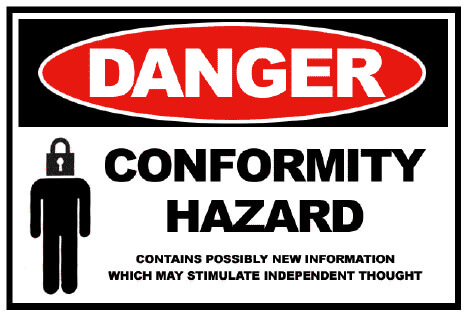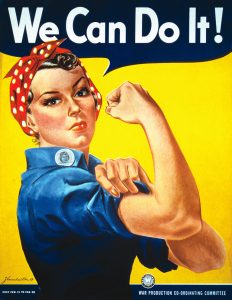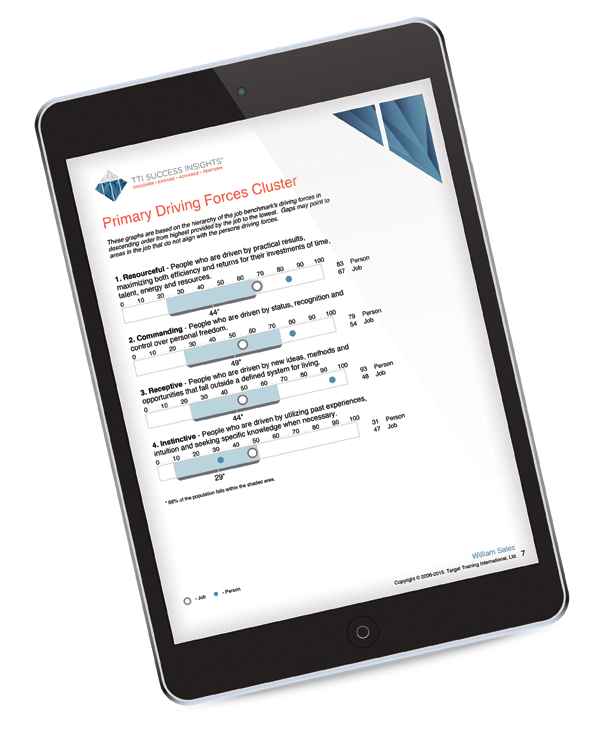6 Types of Unconscious Bias in Recruitment (and How to Avoid Them)
Unconscious bias in recruitment
I’d like to start this blog with a story, inspired by a great Social Talent post.
A father and son were at a gig in which a fire broke out, killing the father and leaving the son seriously injured.
The son was rushed to hospital where a surgeon was on the scene, who exclaimed, “it’s my son!”.
So, who was the surgeon?
Amazingly, about 40% of people get the answer wrong, or can’t work it out.
The surgeon was the boy’s mother!
Unconscious bias in recruitment impacts on how we perceive and judge people, how friendly we are towards people and how much we really listen to people, among other things!
It affects who we invite for an interview, why we hire them and how we interact with them when they’re eventually hired.
It’s a real issue, but it’s not unbeatable. The starting point, as with all change, is awareness. And remember, bias affects everyone.
#1: Gender bias
The story above is a classic example of gender bias. The mistake people make when they get the answer wrong is this: they picture a surgeon and they automatically picture a man.
Gender bias is reflected in our beliefs about what success looks like and the role of women and men in the workplace.
It means social norms about who can fill certain roles, such as nurses, engineers and CEOs.

#2: Racial bias
As a recruitment consultant, you have a responsibility to avoid racial bias. Sometimes, people may bring in their own racial biases from as early on as the first time they read the name on a CV.
Past research cited by Vivian Giang found that applicants with white-sounding names received as many as 50% more callbacks than applicants with black-sounding names who had the same qualifications.
#3: College bias
Hiring people who studied in a few select colleges can inhibit diversity efforts. Focus on getting to know your candidates – on their experiences and challenges.
Work to overcome favouritism based on what college they attended.
#4: Similarity bias
We tend to like people who are similar to us, but that doesn’t mean that they’re the right person for the job.
When we feel an affinity towards someone – when we went to the same school or come from the same area for example – we are also more likely to hire them.
Keep an open mind and be welcome to applicants who are dissimilar to you.
#5: Conformity bias
One of the most famous studies in psychology is the Asch conformity experiment, which showed the power groups have over us, and the impact they have on conformity.
Conformity bias comes from a desire to go along with the group.
When recruiting as part of a panel, be wary of any impulses to agree with everyone around you. Stick to your own beliefs.
As George S. Patton said, ‘if everyone is thinking alike, then somebody isn’t thinking’.

#6: Beauty bias
Beware of the halo effect when it comes to looks. Beauty bias is based on the assumption that a person with particular attributes must also be the most successful.
According to Social Talent, height of CEOs is a significant beauty bias in the US. They write that while 60% of CEOs in the US are over 6 foot, only 15% of the total population is over 6 foot tall. And while 36% of US CEOs are over 6.2 feet, only 4% of the US population is over 6.2 feet tall.
Try also to avoid hiring people who look similar to people who previously worked in that role.
How to avoid unconscious bias in recruitment
#1: Test your own bias
Start with testing out your own bias as a recruiter.
Why not try this great free online tool from Harvard – their Implicit Association Test. This can bring some really interesting insights.
#2: Create gender-neutral job advertisements
Become conscious of the wording of your job advertisements, and aim to make them gender neutral.
This Gender Decoder for job advertisements is really simple and easy to use. Try it for your next advertisement.

#3: Use structured interviews
Structured interviews can help eliminate the impact of some unconscious bias in recruitment.
Keep the questions the same and in the same order for all candidates.
#4: Set diversity targets
As well as the tips listed above, it’s important to set specific diversity targets to avoid unconscious bias in recruitment.
According to Inc, Pinterest and Twitter have publicly shared measurable hiring goals for 2016 in an effort to stay accountable.
#5: Benchmark the Role
Clearly articulate the key accountabilities for the role and build behavioural, motivational, competence and acumen capacity
benchmarks using TTI tools and processes. This benchmarking process will help you to significantly remove bias and
make for better hires – ones that really match the job requirements.
Final thoughts…
Unconscious bias in recruitment is very common, but by being aware of your own biases and taking active steps, it can be avoided.
Notice if you bring any of the biases mentioned into your recruitment company, try some of the tips above and see what happens.
How Employee Experience Leads to a Highly Productive Workforce
We believe in order to create engagement, employers need to move beyond believing that experience is all about extra benefits at work such as Massages Mondays and Pool Tables. Real employee experience begins with meaningful work. What can your organisation do to create meaningful work for your people? What can you do to make your people feel connected and to feel like they belong and they trust you? Isn’t this what Experience is all about?
DISC vs. MBTI
How does DISC compare to MBTI? This is a common question many people have asked us over the years. There are many different angles to consider, as both tools are used frequently in organizations, but in different ways. In this article, we will answer...
Podcast – Building Authentic Empathy
Recently Padraig spoke with Dale Dixon on the complete leader podcast. Host Dale Dixon interviews Business Coach and Strategist Padraig Berry, who is the CEO of One Focus Business Consultants and TTI Success Insights Ireland. On today's episode, Dale and Padraig...

FREE DISC Assessment: Find out what your behaviours really are!
SHARING IS CARING…
Unconscious bias in recruitment
I’d like to start this blog with a story, inspired by a great Social Talent post.
A father and son were at a gig in which a fire broke out, killing the father and leaving the son seriously injured.
The son was rushed to hospital where a surgeon was on the scene, who exclaimed, “it’s my son!”.
So, who was the surgeon?
Amazingly, about 40% of people get the answer wrong, or can’t work it out.
The surgeon was the boy’s mother!
Unconscious bias in recruitment impacts on how we perceive and judge people, how friendly we are towards people and how much we really listen to people, among other things!
It affects who we invite for an interview, why we hire them and how we interact with them when they’re eventually hired.
It’s a real issue, but it’s not unbeatable. The starting point, as with all change, is awareness. And remember, bias affects everyone.
#1: Gender bias
The story above is a classic example of gender bias. The mistake people make when they get the answer wrong is this: they picture a surgeon and they automatically picture a man.
Gender bias is reflected in our beliefs about what success looks like and the role of women and men in the workplace.
It means social norms about who can fill certain roles, such as nurses, engineers and CEOs.
*** image: unconscious bias in recruitment
#2: Racial bias
As a recruitment consultant, you have a responsibility to avoid racial bias. Sometimes, people may bring in their own racial biases from as early on as the first time they read the name on a CV.
Past research cited by Vivian Giang found that applicants with white-sounding names received as many as 50% more callbacks than applicants with black-sounding names who had the same qualifications.
#3: College bias
Hiring people who studied in a few select colleges can inhibit diversity efforts. Focus on getting to know your candidates – on their experiences and challenges.
Work to overcome favouritism based on what college they attended.
#4: Similarity bias
We tend to like people who are similar to us, but that doesn’t mean that they’re the right person for the job.
When we feel an affinity towards someone – when we went to the same school or come from the same area for example – we are also more likely to hire them.
Keep an open mind and be welcome to applicants who are dissimilar to you.
#5: Conformity bias
One of the most famous studies in psychology is the Asch conformity experiment, which showed the power groups have over us, and the impact they have on conformity.
Conformity bias comes from a desire to go along with the group.
When recruiting as part of a panel, be wary of any impulses to agree with everyone around you. Stick to your own beliefs.
As George S. Patton said, ‘if everyone is thinking alike, then somebody isn’t thinking’.
**** image title: unconscious bias in recruitment 2 tiny
#6: Beauty bias
Beware of the halo effect when it comes to looks. Beauty bias is based on the assumption that a person with particular attributes must also be the most successful.
According to Social Talent, height of CEOs is a significant beauty bias in the US. They write that while 60% of CEOs in the US are over 6 foot, only 15% of the total population is over 6 foot tall. And while 36% of US CEOs are over 6.2 feet, only 4% of the US population is over 6.2 feet tall.
Try also to avoid hiring people who look similar to people who previously worked in that role.
How to avoid unconscious bias in recruitment
#1: Test your own bias
Start with testing out your own bias as a recruiter.
Why not try this great free online tool from Harvard – their Implicit Association Test. This can bring some really interesting insights.
#2: Create gender-neutral job advertisements
Become conscious of the wording of your job advertisements, and aim to make them gender neutral.
This Gender Decoder for job advertisements is really simple and easy to use. Try it for your next advertisement.
*** image: unconscious bias in recruitment 1 tiny
#3: Use structured interviews
Structured interviews can help eliminate the impact of some unconscious bias in recruitment.
Keep the questions the same and in the same order for all candidates.
#4: Set diversity targets
As well as the tips listed above, it’s important to set specific diversity targets to avoid unconscious bias in recruitment.
According to Inc, Pinterest and Twitter have publicly shared measurable hiring goals for 2016 in an effort to stay accountable.
Final thoughts…
Unconscious bias in recruitment is very common, but by being aware of your own biases and taking active steps, it can be avoided.
Notice if you bring any of the biases mentioned into your recruitment company, try some of the tips above and see what happens.



